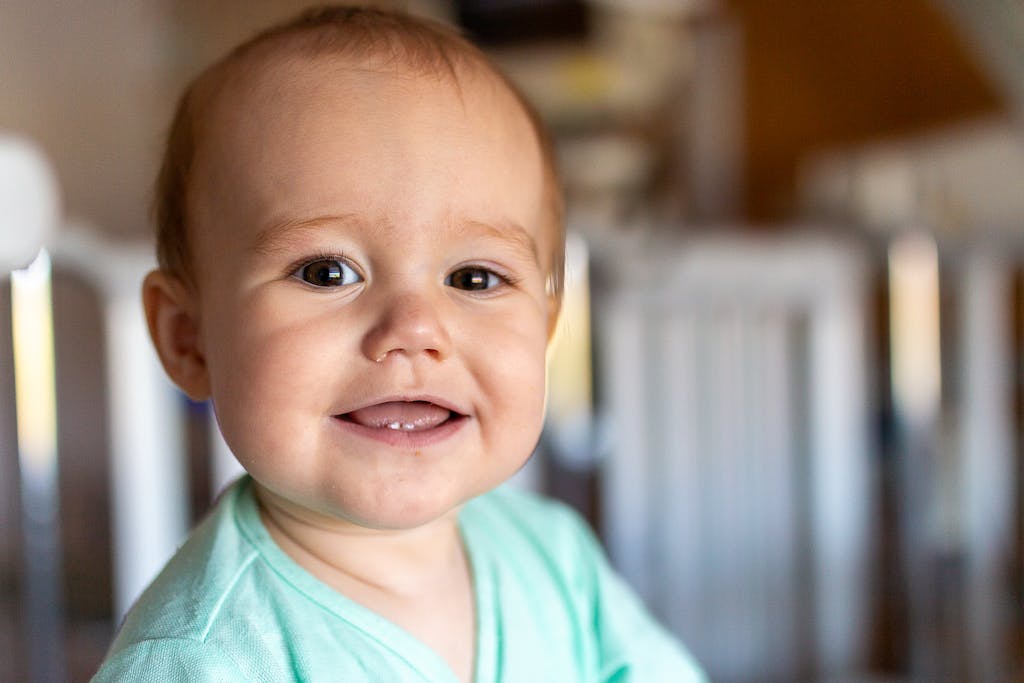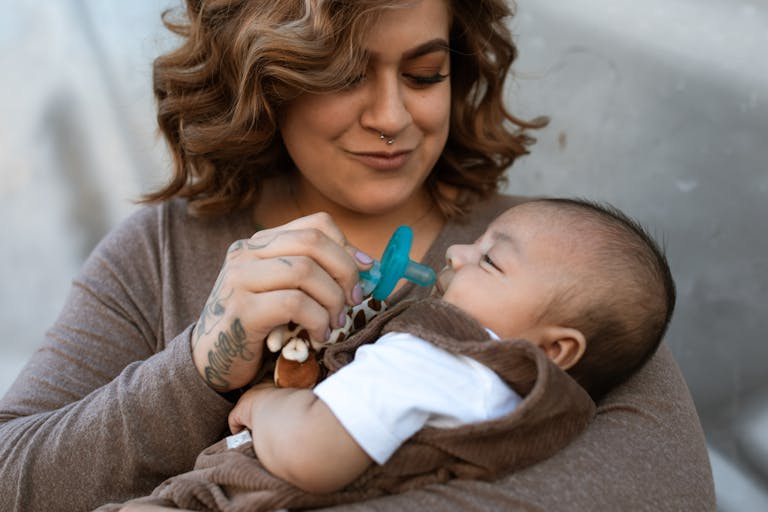As a parent, the first sight of a swollen gum or a drooly chin can set off a volley of questions. Is this discomfort simply teething, or is something more concerning at play? The early months usher in surprises, and baby teething symptoms can puzzle even the most seasoned caregivers. Wondering how to distinguish normal irritability from something bothersome, how to soothe your little one safely, or when those pearly whites are due to arrive? Let’s navigate these swirling questions, explore what’s typical, what’s not, and discover science-backed ways to ease the teething journey for your baby. You’ll find practical strategies, myth-busting facts, and tools to boost your parental confidence at every gum-tingling stage.
Understanding the Stages and Timeline of Teething
From the gummy grins of early infancy to the appearance of the first incisors, teething is a complex dance of biology and timing. Typically, the process launches anywhere between 4 and 8 months—but let’s face it, babies don’t read calendars. The primary teeth (sometimes called “milky teeth” or “deciduous teeth”) gradually push through the gumline, beginning most often with the lower central incisors. These are followed in succession by the upper central incisors, both sets of lateral incisors, first molars, canines, and finally, those broad and sometimes troublesome second molars.
Don’t be surprised if your baby’s schedule deviates—a few are born with teeth, while others wait well past their first birthday. On average, by age 3, all twenty primary teeth have staked their claim. Each new tooth can bring several days of symptoms, occasionally clustering together in teething “waves” that challenge sleep and routines.
Recognizing Baby Teething Symptoms: What’s Normal, What’s Not?
You might ask, “How do I tell if these fussy bouts are actually baby teething symptoms or something else?” Medical studies and dental specialists agree: the most common baby teething symptoms include substantial drooling (sometimes resulting in a distinctive rash along the cheeks and chin), red or inflamed gums, and persistent chewing on any object those tiny hands can grab—a toy, a finger, a chilled washcloth, you name it.
Babies can become distinctly more irritable or restless, especially at night, as gum discomfort seems to heighten when the world grows quiet. One or both cheeks might sport a fiery glow. Sometimes, a slight uptick in body temperature is observed, but high fever does not typically accompany teething. Catching a mild cough or gag? Excess saliva is often the culprit here, stimulating the cough reflex more frequently.
Curious why appetite seems to vanish overnight? Sensitive gums can make feeding painful, leading to sudden food refusals. Soft, chill foods may offer temporary relief. And when sleep patterns unravel—frequent wakes, shorter naps—it’s often the gums, not habit, causing the disruption.
Yet not every change is ascribed to teething. Persistent high fever, severe diarrhea, inconsolable crying, a rash spreading well beyond the mouth, or lethargy signal it’s time to check with your doctor. Teething itself rarely causes illness but can coincide with changes in your baby’s immunity, making vigilance important.
Teething Timeline and the Telltale Signs
The relentless march of primary teeth usually begins with lower central incisors breaking through at about 6 to 10 months. Molars, both first and second, might not make their dramatic entrance until well after the first birthday, often causing more pronounced baby teething symptoms—think increased pressure, swollen gums, and amplified crankiness. Canines slot neatly between the molars, rounding out the full set generally by 2.5 to 3 years old.
Symptoms, on average, emerge 3 to 5 days before a tooth cuts through and resolve a few days after. When several teeth erupt together, symptoms can escalate and stretch over a longer period, making it seem as if teething lasts forever.
How to Soothe a Teething Baby: Fact-Checked Techniques and Smart Strategies
Is there a secret to soothing teething pain? Research and pediatric recommendations converge around a handful of safe and effective methods:
- Gently massaging your baby’s gums with a clean finger can ease soreness by applying light, comforting pressure.
- Chilled, not frozen, washcloths can be deeply comforting—plus, the cold helps numb irritated nerves.
- Teething rings made of firm, medical-grade rubber provide relief when gnawed on, but steer clear of those that freeze solid (risk of gum injury) or contain liquid fillers.
- If your child is enjoying solid foods, servings of cooled applesauce or plain yogurt may serve double duty as both nourishment and pain relief.
- Keep the skin dry—dab away drool frequently, and apply a barrier cream to stave off rashes.
- Sometimes, what a baby seeks most is a cuddle, soothing song, or gentle presence. Support and emotional security often go hand-in-hand with physical comfort.
What should you avoid? The list is longer than some might expect. Homeopathic tablets and gels containing belladonna, benzocaine, or lidocaine can pose life-threatening risks. Teething necklaces and bracelets, touted in some circles, are choking or strangulation hazards, with zero scientific benefit. Dipping pacifiers or teethers in honey, syrup, or sugary substances must be avoided—this fuels early decay and, in the case of honey, risks infant botulism. When in doubt, opt for simple, safe methods, and discuss any medication—even acetaminophen or ibuprofen—with your child’s healthcare provider.
Safe Oral Care for Teething and Beyond
It’s never too early to prioritize oral hygiene. Begin by gently wiping your baby’s gums with a damp, soft cloth after feeds. Once that first tooth peeks through, a soft-bristled baby toothbrush moistened with a smear (no bigger than a grain of rice) of fluoride toothpaste is safest. Brush twice daily, morning and evening. Start flossing once two teeth touch.
Avoid sending your little one to bed with a bottle containing milk or juice. This single habit is a leading cause of early childhood tooth decay, sometimes referred to as “baby bottle tooth decay.” Ditto for sweet liquids on pacifiers or teething toys—let’s keep teeth strong from the start.
A dental visit should be scheduled by your child’s first birthday, or within six months of the first tooth’s arrival. These early appointments lay the groundwork for a healthy smile—and offer you direct answers to any questions about your baby’s oral development.
Debunking Myths: What Science Says About Teething
Let’s put an end to common misunderstandings. No, teething does not cause high fevers, nor can it be blamed for significant diarrhea. A mild, short-lived increase in temperature may be seen, but persistent fever always merits a medical evaluation. Likewise, claims about homeopathic or herbal teething remedies, teething jewelry, or frozen teethers have been scrutinized in pediatric and dental literature and found wanting, with risk far outweighing any possible benefit.
It’s normal for babies to seek comfort by thumb sucking or with a pacifier, especially during periods of teething discomfort. Long-term use past age 2 to 4 may, however, influence the way permanent teeth align and should be discussed with your dentist.
When to Call the Doctor: Signs You Shouldn’t Ignore
While most baby teething symptoms fall into the mild-to-moderate annoyance category, red flags must never be overlooked. Swelling of the gums with pus, persistent high fever (above 38°C or 100.4°F), vomiting, refusal to eat or drink, or unexpected lethargy require prompt medical review. Unusual color changes on the teeth—white, brown, or black spots that resist brushing—could signal early decay and call for prompt dental evaluation.
Keep a written log of symptoms: noting onset, duration, appetite changes, mood fluctuations, and any soothing measures that help. This small step transforms guesswork into actionable data for healthcare providers.
Building Healthy Habits and Routines
Teething is, at its heart, another developmental milestone. Routines centered around predictability—regular naps, meals, low-key bedtime rituals—support both emotional and physical well-being. Favor a handful of easy-to-clean, thoughtfully chosen teething toys over an overwhelming pile. As your baby reaches for soft new foods around 6 months, offer options that ease both hunger and gum discomfort. Through all these transitions, a calm environment and lots of direct attention form the real backbone of comfort.
Key Takeaways
- Baby teething symptoms, though sometimes dramatic, are generally mild—expect drooling, gum swelling, chewing, and fussy spells, but not true high fever or harsh illnesses.
- Safe, evidence-based remedies—including gum massage, chilled teething objects, and healthy emotional support—are your best bets for relief.
- Begin oral hygiene early, starting before teeth emerge, and schedule that all-important first dental visit by the first birthday.
- Remain vigilant for signs not typically linked with teething—prolonged fever, significant changes in feeding, or persistent gum swelling—and involve your doctor or dentist as needed.
- Every baby’s teething journey is unique; some breeze through, others show every symptom in the book. Your presence, sensitivity, and informed choices are the keys to comfort.
- For individualized advice and free health questionnaires tailored to each developmental stage, download the Heloa app—a valuable tool designed to help support your parenting journey.
Questions Parents Ask
Can teething cause diarrhea in babies?
It’s normal to hear that teething might lead to diarrhea, but scientific studies haven’t found a direct link between the two. Some parents notice looser stools during teething, often because of increased saliva that your baby may swallow. However, if your baby has persistent or severe diarrhea, it’s important to consider other possible causes and to consult a healthcare professional. There’s no need to worry—just keep an eye on your baby’s hydration and general well-being.
Why do babies drool so much when teething?
Drooling is a frequent companion to teething and can start even before the first tooth appears. As new teeth begin moving under the gums, the body naturally produces extra saliva, which helps soothe and protect sensitive tissues in the mouth. This surge in saliva can be surprising, but it’s completely normal. You might notice more spit-up, wet chins, or even a mild rash. Gentle dabbing and a soft, absorbent bib can help keep your little one comfortable.
How long do teething symptoms usually last?
Teething can seem endless, especially if multiple teeth arrive close together. Typically, symptoms such as fussiness, swollen gums, and increased drooling appear a few days before a tooth breaks through and fade soon after. For most babies, this discomfort lasts 3 to 7 days around each tooth. Some babies are more affected than others, and that’s completely normal. If you ever feel unsure or if symptoms seem prolonged, don’t hesitate to reach out to your healthcare provider—they’re here to support you.

Further reading:









